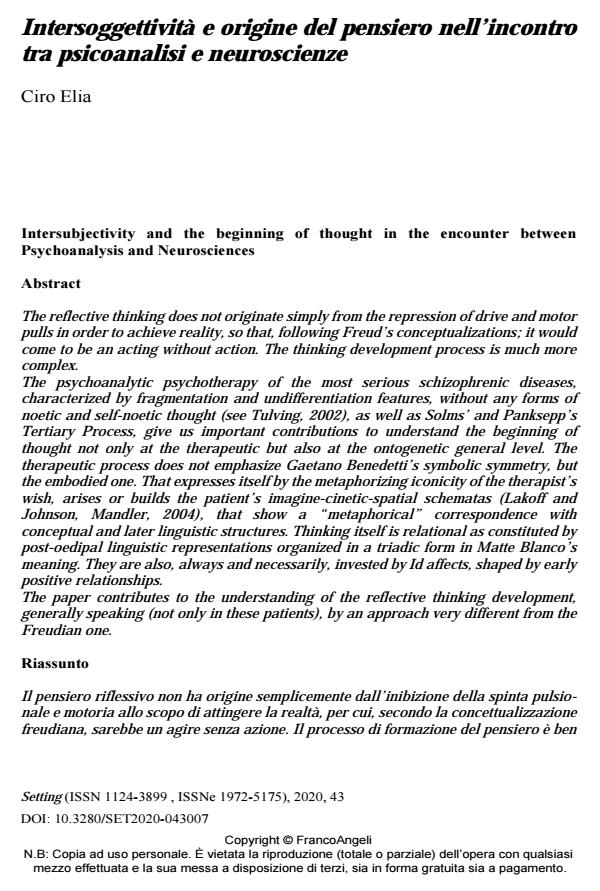Intersoggettività e origine del pensiero nell’incontro tra psicoanalisi e neuroscienze
Titolo Rivista SETTING
Autori/Curatori Ciro Elia
Anno di pubblicazione 2020 Fascicolo 2020/43
Lingua Italiano Numero pagine 4 P. 119-122 Dimensione file 164 KB
DOI 10.3280/SET2020-043007
Il DOI è il codice a barre della proprietà intellettuale: per saperne di più
clicca qui
Qui sotto puoi vedere in anteprima la prima pagina di questo articolo.
Se questo articolo ti interessa, lo puoi acquistare (e scaricare in formato pdf) seguendo le facili indicazioni per acquistare il download credit. Acquista Download Credits per scaricare questo Articolo in formato PDF

FrancoAngeli è membro della Publishers International Linking Association, Inc (PILA)associazione indipendente e non profit per facilitare (attraverso i servizi tecnologici implementati da CrossRef.org) l’accesso degli studiosi ai contenuti digitali nelle pubblicazioni professionali e scientifiche
The reflective thinking does not originate simply from the repression of drive and motor pulls in order to achieve reality, so that, following Freud’s conceptualizations; it would come to be an acting without action. The thinking development process is much more complex. The psychoanalytic psychotherapy of the most serious schizophrenic diseases, characterized by fragmentation and undifferentiation features, without any forms of noetic and self-noetic thought (see Tulving, 2002), as well as Solms’ and Panksepp’s Tertiary Process, give us important contributions to understand the beginning of thought not only at the therapeutic but also at the ontogenetic general level. The therapeutic process does not emphasize Gaetano Benedetti’s symbolic symmetry, but the embodied one. That expresses itself by the metaphorizing iconicity of the therapist’s wish, arises or builds the patient’s imagine-cinetic-spatial schematas (Lakoff and Johnson, Mandler, 2004), that show a "metaphorical" correspondence with conceptual and later linguistic structures. Thinking itself is relational as constituted by post-oedipal linguistic representations organized in a triadic form in Matte Blanco’s meaning. They are also, always and necessarily, invested by Id affects, shaped by early positive relationships. The paper contributes to the understanding of the reflective thinking development, generally speaking (not only in these patients), by an approach very different from the Freudian one.
Ciro Elia, Intersoggettività e origine del pensiero nell’incontro tra psicoanalisi e neuroscienze in "SETTING" 43/2020, pp 119-122, DOI: 10.3280/SET2020-043007